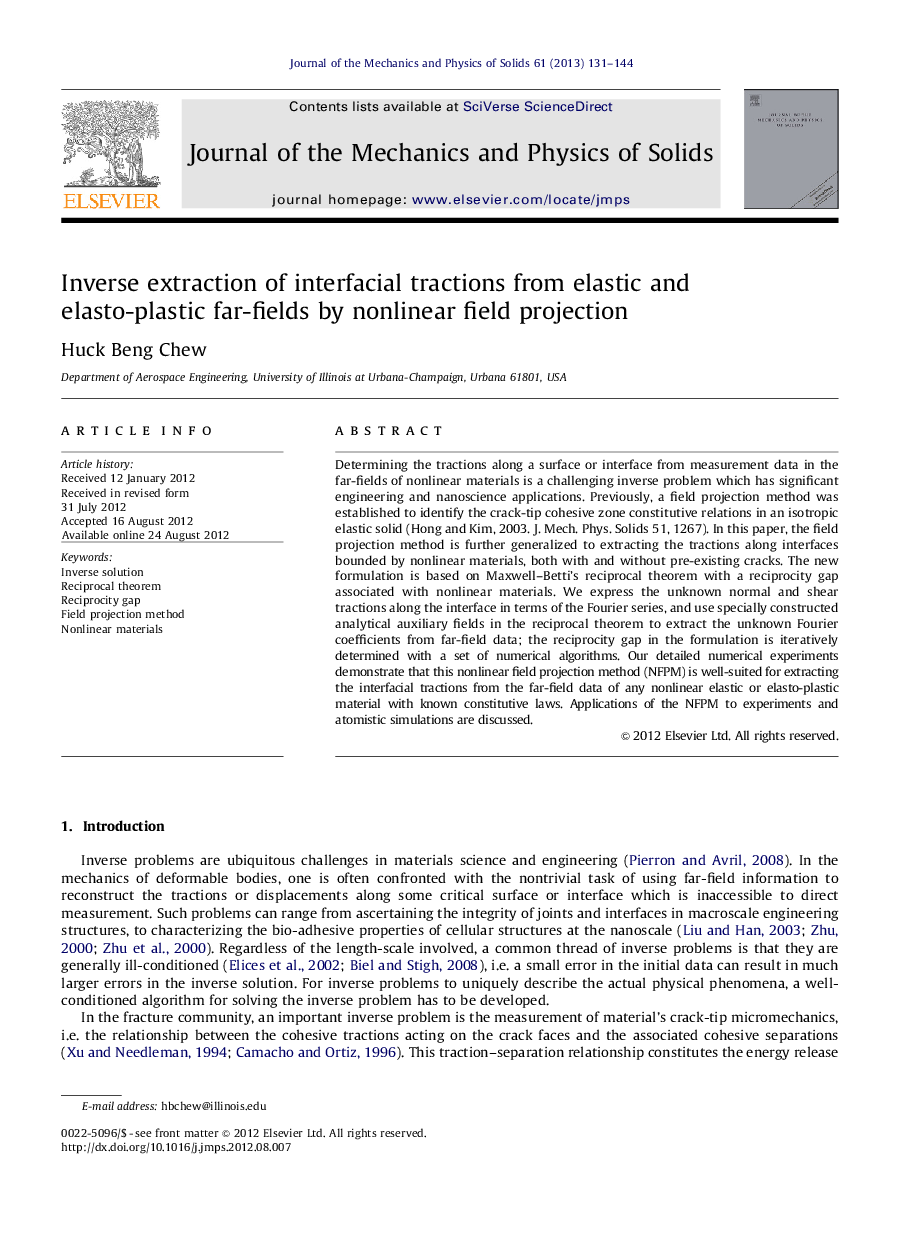| کد مقاله | کد نشریه | سال انتشار | مقاله انگلیسی | نسخه تمام متن |
|---|---|---|---|---|
| 797992 | 1467093 | 2013 | 14 صفحه PDF | دانلود رایگان |

Determining the tractions along a surface or interface from measurement data in the far-fields of nonlinear materials is a challenging inverse problem which has significant engineering and nanoscience applications. Previously, a field projection method was established to identify the crack-tip cohesive zone constitutive relations in an isotropic elastic solid (Hong and Kim, 2003. J. Mech. Phys. Solids 51, 1267). In this paper, the field projection method is further generalized to extracting the tractions along interfaces bounded by nonlinear materials, both with and without pre-existing cracks. The new formulation is based on Maxwell–Betti's reciprocal theorem with a reciprocity gap associated with nonlinear materials. We express the unknown normal and shear tractions along the interface in terms of the Fourier series, and use specially constructed analytical auxiliary fields in the reciprocal theorem to extract the unknown Fourier coefficients from far-field data; the reciprocity gap in the formulation is iteratively determined with a set of numerical algorithms. Our detailed numerical experiments demonstrate that this nonlinear field projection method (NFPM) is well-suited for extracting the interfacial tractions from the far-field data of any nonlinear elastic or elasto-plastic material with known constitutive laws. Applications of the NFPM to experiments and atomistic simulations are discussed.
Journal: Journal of the Mechanics and Physics of Solids - Volume 61, Issue 1, January 2013, Pages 131–144